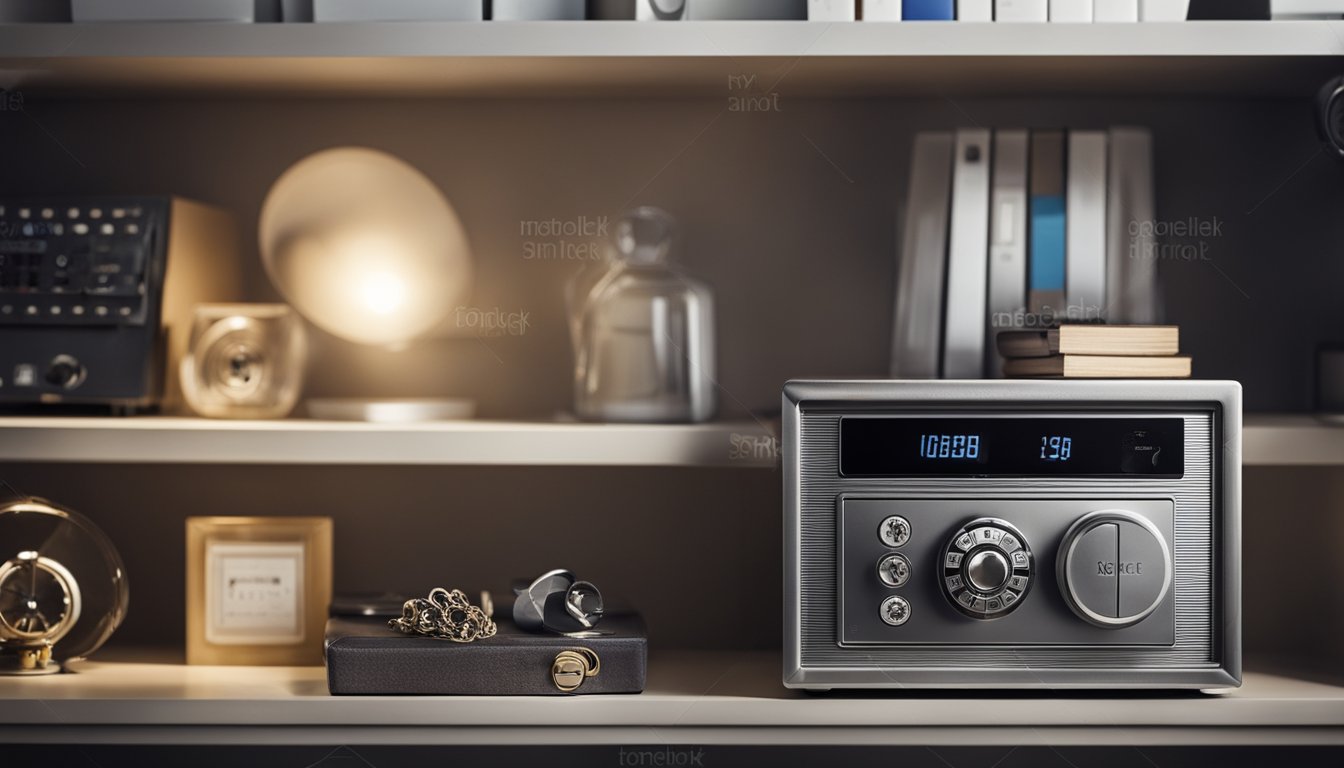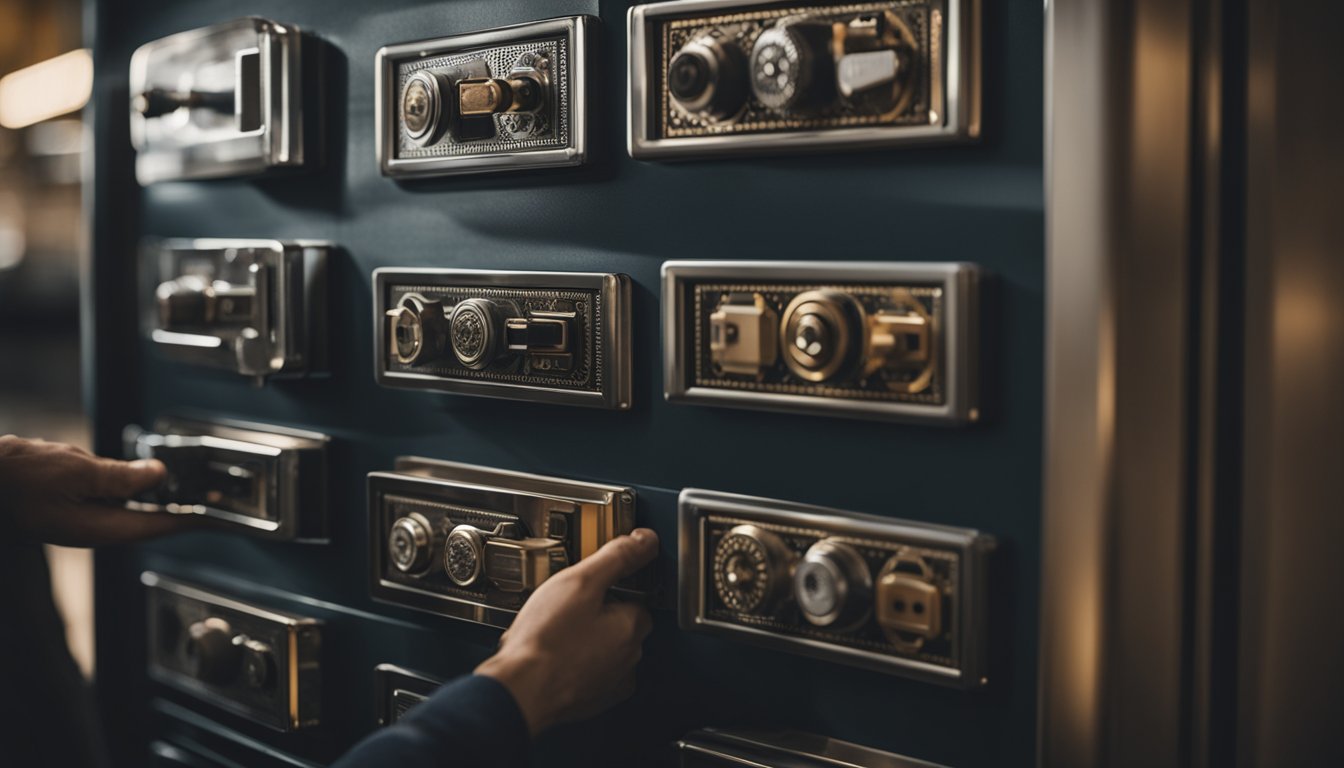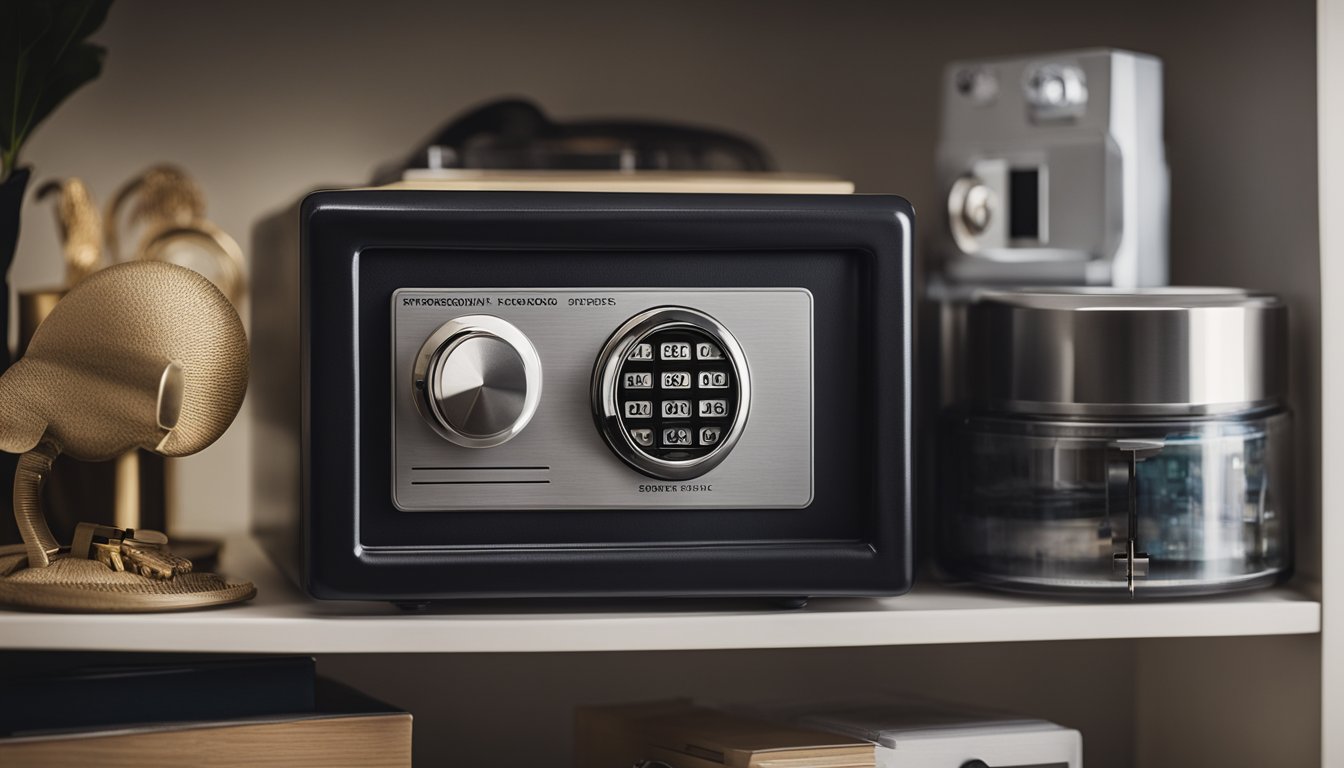Late updated: 22 Jul 2024 10:07
Written by: Elena Prescott
How To Choose The Right Safe For Your Home: Essential Factors to Consider
Choosing the right safe for your home is a critical step in protecting valuable possessions and important documents. With so many options available, it's easy to feel overwhelmed. The most important factor when choosing a home safe is understanding the specific threats you want to guard against, such as fire, water, or theft.

Our journey begins by evaluating your safety needs. Are you looking to protect documents from fire, or are you more concerned about theft? Some safes provide specialised protection, like fireproof safes for safeguarding documents or biometric safes for securing firearms. We need to match the right type of safe to the right kind of protection to ensure peace of mind.
In addition to assessing threats, we should also consider practical aspects like size, capacity, and locking mechanisms. Whether you prefer a traditional key lock, a digital keypad, or biometric access, it's essential to choose a safe that meets all your requirements while fitting seamlessly into your home environment. By carefully considering these factors, we can make an informed decision that offers the best security for our needs.
Key Takeaways
- Identify the specific threats (fire, water, theft) your safe needs to protect against.
- Choose the type of safe and locking mechanism based on your security needs.
- Match the safe's size and capacity to your storage requirements.
Assessing Your Safety Needs
Understanding your safety needs is crucial in choosing the right home safe. Consider your specific risks and priorities, and ensure that the safe you select meets key security certifications and ratings for optimal protection.
Evaluating Risks and Priorities
First, identify which valuables you need to protect—such as documents, jewellery, watches, and firearms. Assess potential threats like fire, water, and burglary, then categorise items based on these risks. For fire risk, focus on fireproof safes designed to withstand high temperatures. In areas prone to flooding, a water-resistant or waterproof safe is essential. Prioritise burglary resistance if theft is a concern.
List your items and their dimensions to decide on the required storage capacity. A safe should comfortably hold all valuables without being excessively large. This ensures efficient use of space and resources. By mapping out the risks and priorities, we can make an informed decision about the type of safe needed.
Understanding Safe Ratings and Certifications
It is vital to understand the certifications and ratings of home safes. Reputable certifications include those from Underwriters Laboratories (UL) and Intertek, which evaluate safes for fire protection, water resistance, and burglary resistance.
A UL rating indicates the safe has passed rigorous fire resistance tests. Look for ratings like UL 72-Class 350, which means the interior will remain below 350°F for a specified duration. Water resistance ratings, such as ETL Verified by Intertek, ensure the safe can withstand water immersion for a set period.
Burglary-resistant safes, certified by UL, are rated based on the time and tools required to break into them. TL-15, TL-30 ratings, and higher denote increased resistance. Select a safe with appropriate certifications to guarantee reliable protection for your valuables, offering peace of mind in safeguarding your home.
By carefully evaluating these factors, we can choose a safe that best meets our security needs.
Selecting the Right Safe

When choosing a safe for your home, it's crucial to consider factors like size, security features, construction materials, and budget. Each aspect plays a vital role in ensuring your safe meets your specific needs effectively.
Size, Capacity, and Placement Considerations
The first step is to determine the ideal size based on what you need to store. Safes come in various sizes, measured in cubic feet. If you need to store documents, a compact floor safe might be sufficient. For firearms, a larger gun safe is required.
Consider where you will place the safe. Placement options include wall safes, floor safes, and portable safes. Wall safes can be concealed behind artwork or mirrors. Floor safes offer more storage but need anchoring to the ground. Think about accessibility too. A safe deposit box is ideal for items you don’t need frequent access to, while a home safe should be easily reachable.
Choosing Locking Mechanisms and Security Features
Locking mechanisms vary significantly. Traditional combination locks remain reliable, while digital keypads offer convenience. Biometric safes use fingerprint scans for quick access, which is particularly useful for emergency cash or valuables.
Consider safes with multiple security features. Electronic keypads with backup keys provide extra assurance. Opt for safes with pry-resistant hinges and concealed hinges to thwart break-in attempts. Ensure the safe has solid door bolts and a sturdy steel door to enhance security.
Materials and Build Quality
The materials and build quality of a safe determine its durability. Look for safes with a steel body and a thick, reinforced door. A high-quality build will withstand various forms of attacks and provide lasting protection.
Fireproof and waterproof models are essential if you want to protect documents from natural disasters. Fire-resistant safes are usually rated by the duration they can withstand high temperatures. Verify these ratings through trusted reviews or certifications.
Budgeting and Performance
Your budget will significantly influence your choice. Higher-end safes often offer better performance, especially in terms of durability and advanced features. However, it's possible to find reliable options within a modest budget, especially if you focus on essential features over luxury add-ons.
Assess performance through customer reviews and expert opinions. Ensure the safe meets necessary security standards without exceeding your budget. Balancing cost with features such as fire resistance, water resistance, and quality locking mechanisms is key to making an informed decision.
Choosing the right safe involves careful consideration of size, security features, materials, and budget. By focusing on these factors, you can find a safe that offers the protection and convenience you need for your valuable items.
Frequently Asked Questions

Choosing the right safe involves understanding various features, sizes, and investment levels. We address some common queries to help you make an informed decision.
What features are crucial when selecting a fireproof and waterproof safe for home use?
Key features include a robust fire rating, usually expressed in hours of protection at specific temperatures, and a reliable waterproof seal. These safes should also have a sturdy locking mechanism, whether electronic or mechanical, to ensure maximum security.
How can one determine the optimal size and weight for a home safe?
The optimal size often depends on what you plan to store. A standard home safe, around 1.2 to 1.3 cubic feet, frequently suffices. It's also important to consider the weight; heavier safes provide better security against theft but may require special installation.
What considerations should be made when choosing a home safe for storing important documents?
When storing important documents, you should focus on fire and water resistance. Additionally, the safe should have multiple compartments or adjustable shelving to organise documents properly. An interior that prevents moisture build-up is also beneficial to protect paper items.
How much is it advisable to invest in a home safe?
The investment can vary based on requirements. Safes can range from £50 for basic fire chests to several hundred pounds for more sophisticated models with higher security features. We recommend balancing your budget with the level of protection and capacity you need.
Which criteria are used by Consumer Reports to evaluate the best home safes?
Consumer Reports evaluates safes based on security features, ease of use, fire and water resistance, and the quality of locking mechanisms. They also consider user feedback and durability under various conditions to ensure the safes meet high standards of protection.
Is it possible for money to withstand fire damage if stored in a fireproof safe?
Paper money can generally withstand fire damage if placed in a fireproof safe with a high fire rating. For added protection, consider using additional fire-resistant pouches within the safe to further shield cash and other valuables from high temperatures.
